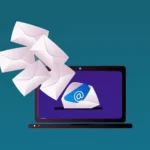In today’s fast-paced digital world, email remains a cornerstone of professional and personal communication. However, crafting the perfect email—concise, error-free, and appropriately toned—can be time-consuming and challenging. Enter artificial intelligence (AI), a game-changing technology that is transforming email writing. From automated suggestions to full-scale composition, AI tools like summarizer, are empowering users to communicate more effectively.
AI-powered email writing tools leverage machine learning algorithms to analyze vast datasets of language patterns, grammar rules, and contextual nuances. For instance, platforms like Gmail’s Smart Compose or Microsoft Outlook’s AI features use predictive text to suggest phrases as you type. These systems are trained on billions of emails, enabling them to anticipate what you’re trying to say and offer real-time recommendations. More advanced tools, such as Grammarly or Jasper, go a step further by not only correcting spelling and grammar but also refining tone, structure, and clarity. Imagine drafting an email to a client: AI can suggest professional phrasing like “I appreciate your interest” instead of a casual “Thanks for reaching out,” ensuring your message aligns with the desired formality.
The benefits of AI in email writing are manifold
First and foremost, it saves time. Professionals often spend hours composing emails, but AI can streamline the process, allowing users to generate a polished draft in minutes. This efficiency is particularly valuable in high-stakes environments, such as sales or customer service, where quick responses can make or break deals. Additionally, AI enhances accuracy by minimizing errors. It catches not just typos but also subtle issues like awkward phrasing or cultural insensitivities, which can otherwise damage relationships. For non-native English speakers, AI acts as a virtual editor, boosting confidence and improving communication quality.
Moreover, AI promotes personalization at scale. Tools like Copy.ai or Writesonic can analyze recipient data—such as past interactions or preferences—to tailor emails that feel customized without manual effort. This level of personalization increases engagement; studies show that personalized emails have open rates 29% higher than generic ones. Businesses are already capitalizing on this: a report by McKinsey estimates that AI could automate up to 45% of email-related tasks, freeing employees for more creative work.
However, AI for email writing isn’t without challenges. One major concern is over-reliance, which might lead to a loss of personal voice. If users depend too heavily on AI suggestions, their emails could become formulaic and robotic, stripping away the human touch that builds genuine connections. Privacy is another issue; many AI tools process data through cloud servers, raising questions about data security and compliance with regulations like GDPR. Furthermore, biases in AI algorithms—stemming from training data—could inadvertently perpetuate stereotypes or inappropriate language if not properly addressed.

Looking ahead, the future of AI in email writing is promising
As AI models like GPT-4 evolve, we can expect more sophisticated features, such as real-time translation for multilingual communication or sentiment analysis to gauge recipient reactions. Integration with virtual assistants like Siri or Alexa could make email writing even more seamless, potentially turning emails into interactive conversations. For individuals and organizations, adopting AI responsibly could mean not just faster workflows but also more meaningful interactions.
AI for email writing is a powerful tool that democratizes effective communication, making it accessible to everyone from busy executives to small business owners. By automating routine tasks and enhancing quality, AI allows us to focus on the substance of our messages. As with any technology, the key lies in using it wisely—balancing automation with human creativity. Embracing AI today could be the edge you need in tomorrow’s competitive landscape.







